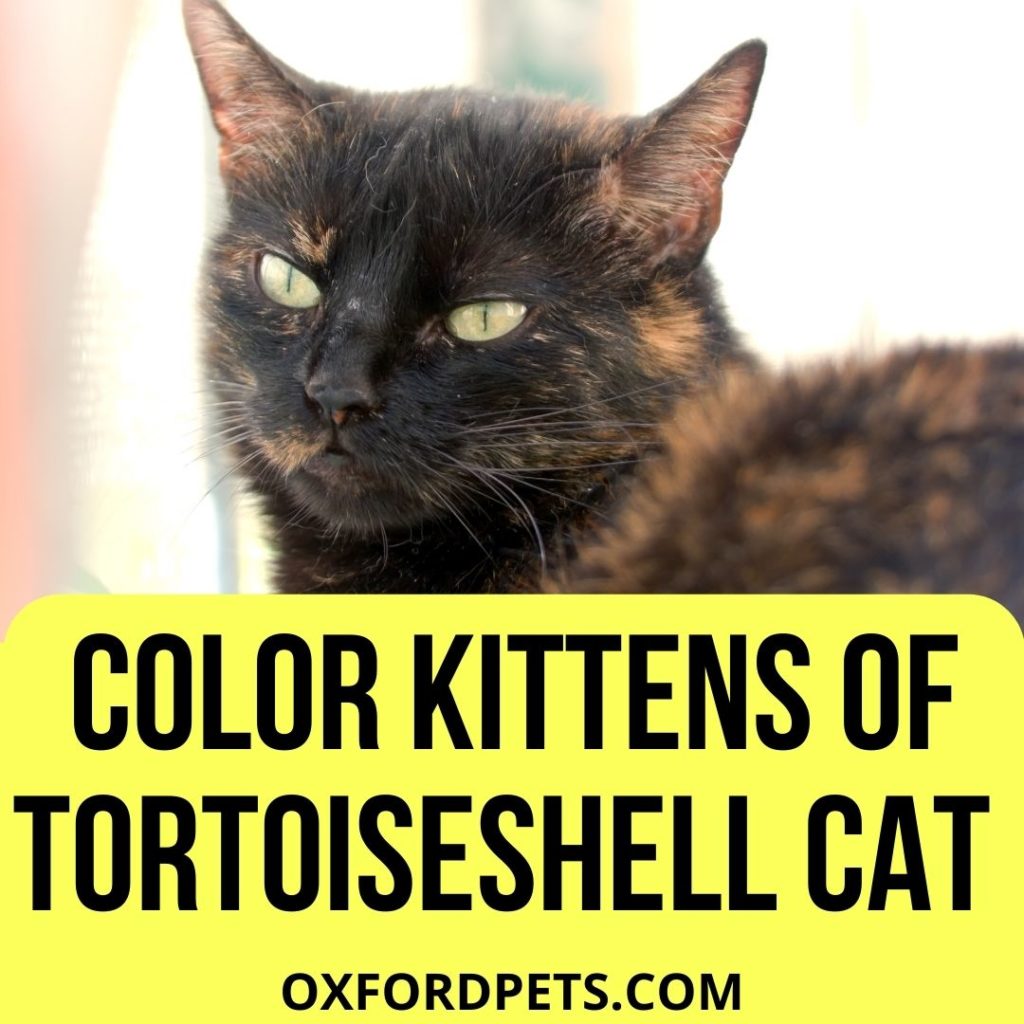When a tortoiseshell cat has kittens, the kittens will also be tortoiseshell if they inherit a ginger coat chromosome and a black coat chromosome. However, in some cases, the color of a kitten can be difficult to predict.
Today we will explore in-depth the fascinating question: what color kittens will a tortoiseshell cat have?
What is the probability that a tortoiseshell cat will have a tortoiseshell kitten?
Predicting that color of a kitten can be difficult and more complicated than first assumed. This is because cat breeds are a wide range of subtly different colors, and each one holds unique genetic material; different from their mother and father.
If the mother cat is a tortoiseshell, there is a high probability that at least some of the female kittens in a litter will also be tortoiseshell in appearance.
However, to confidently predict kitten colors, we need to know the color genetics of parents and ancestors.
Furthermore, actually identifying the kitten as a tortoiseshell can be more complex.
sometimes tortoiseshell markings are mistaken for the markings on a calico cat due to the similarity of these colors.
Tortoiseshell and calico cats are almost always female, although occasionally there are rare cases of a male. When tortoiseshell cats are male, this is usually due to a chromosomal abnormality.
Male tortoiseshell cats are almost always sterile and may sadly encounter health problems throughout their lives. Incredibly, it is thought that only 1 in 3000 tortoiseshell cats are male.
Most often, the tortoiseshell parent is a female. Thus, to inherit this tortoiseshell gene, the kitten should be a female too.
According to research, these combinations of father and mother coat colors can breed a tortoiseshell cat:
- A ginger female and a black male.
- A black female and a ginger male.
- A tortoiseshell female and a ginger male.
- A tortoiseshell female and a black male.
What is a tortoiseshell cat?
The much-loved tortoiseshell cat is often affectionately named a ‘tortie’. The beautiful coat of a tortoiseshell cat is a combination of two colors aside from white; usually red and black, but orange, yellow, cream, chocolate, gray, and blue are also possible colors.
The coat colors are often closely mixed or presented in more expansive patches.
Tortoiseshell coat markings can show in a range of different breeds of feline, including the Japanese Bobtail cat and Cornish Rex cats.
How do you get a tortoiseshell cat?
As this article discussed earlier, almost all tortoiseshell cats are female. When a female cat is born, it has two x chromosomes. Each chromosome holds a unique code to determine the color of the cat’s coat. This code will be for orange or black.
When the kitten has been conceived, the embryo will enable one of the chromosomes in each cell to turn off, creating red and black chromosomes, which will lead to this beautiful tortoiseshell coloring on the cat’s coat.
Some breeders have attempted to breed a tortoiseshell cat; this is usually not possible. The color of the cat can be predicted, but it is highly likely the desired cat color might not materialize, due to the complexities involved in the genetics of a tortoiseshell cat.
What cat breeds can be tortoiseshell?
There is a wide variety of breeds of feline out there which can be tortoiseshell or show traces of the distinctive tortoiseshell marking. Some examples of such cats are:
Key Characteristics Of A Tortoiseshell Cat
The tortoiseshell cat is a unique and very much sought-after breed of cat. As discussed earlier, the markings and patterns on the coat of a tortoiseshell cat are hugely distinctive.
These markings are usually asymmetrical in structure. In some cases, a tortoiseshell cat exhibits ‘split face’ patterning on the face. This is when one side of the feline’s face is black and the other is orange, with a striking line showing down the cat’s nose.
The patterning on the coat of a tortoiseshell cat can also be more pointed than in the common and more widely seen patches; this is referred to colloquially as ‘a tortie point’.
Whilst most owners of tortoiseshell cats celebrate the affectionate and loving personalities of this breed, some owners and researchers have stated that tortoiseshell cats are more likely to exhibit fluctuating mood, but the foundation of scientific evidence to support this theory are small.
It has been observed that a high percentage of tortoiseshell cats have increased aggression and are inclined to chase, bite, hiss and scratch at humans. Reportedly, tortoiseshell cats are also highly sensitive to stimuli in their domestic environments.
But ultimately, no strong assumptions can be made to create connections between the color of a cat’s coat and the features of the cat’s mood and aggression levels.
This is in contrast to connections between temperament and coat colors of other animals, such as horses and rats, where more clear research has been carried out to determine a strong relationship.
Indeed, fluctuating temperaments have been noticed in a range of different species of cat, and temperament can more often be linked to the cat’s exposure to trauma.
Final Thoughts
Overall, it is possible for tortoiseshell cats to birth tortoiseshell kittens, but the outcome of a tortoiseshell kitten is reliant upon many complex factors. One of these factors should be that the mother of the kitten should be a tortoiseshell.
If the mother is a tortoiseshell, there is a higher chance that at least some kittens in the litter will display the distinctive markings and patterns found on the coat of a tortoiseshell. According to folklore over the ages, a tortoiseshell cat is rumored to bring good luck to its owners.
Indeed, in the US, tortoiseshell cats are referred to as ‘money cats’. Even if these rumors are false, there is no denying the beauty and unique qualities to be found in tortoiseshell cats and their tortoiseshell kittens.

